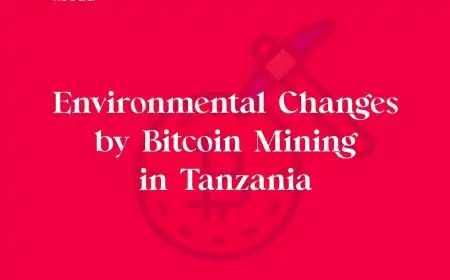Bitcoin NFTs are unique digital assets that are stored on the Bitcoin blockchain. The emergence of Ordinal Theory has ushered in a new era of on-chain assets with distinguishable inscriptions, which are essential building blocks for Bitcoin NFTs. Bitcoin NFT collections are becoming popular in crypto and are a deviation from traditional NFTs.
Read on to learn about Bitcoin NFTs, how they work, and the top 5 Bitcoin NFT collections.
What Are Bitcoin NFTs?
Bitcoin NFTs, typically referred to as Bitcoin Ordinals, are unique crypto assets that comprise inscribed individually numbered satoshis on the Bitcoin network and can represent music, collectibles, digital art, and more.
In 2023, boosted by the popularity of NFTs, Bitcoin programmer Casey Rodarmor came up with a comparable but distinct solution for the Bitcoin blockchain. The solution is Ordinal Theory.
Ordinal Theory is a numbering scheme where each satoshi, the smallest units of Bitcoin, has a unique identifier. Each satoshi can be tracked using indexers to identify the ordinal identifiers or inscriptions. The creation of ordinals allows metadata to be attached to a satoshi creating crypto assets like NFTs that are stored on the Bitcoin blockchain.
The Ordinals protocol was launched in January 2023 and was met with a lot of excitement in the NFT community. The number of Bitcoin ordinals has increased significantly on-chain with digital art, music, and animations being encoded onto Sats.
How Do Bitcoin NFTs Work?
The development of Bitcoin NFTs is attributed to two upgrades to the Bitcoin protocol: Segwit and Taproot. The Segwit upgrade in 2017 was crucial in enhancing on-chain storage efficiency by dividing a transaction into two parts, with one section holding the sender and receiver wallet addresses and the other storing the transaction signatures.
The Taproot upgrade of 2021 expanded Bitcoin’s block size to 4 MB, thereby providing the amount of space needed to store an inscription’s metadata.
The mechanics of Bitcoin ordinals work to combine these upgrades in the following manner. When inscribing a Sat, a transaction is sent to a taproot address and includes an image or any other supported data type in the witness (signatures) section of a transaction. The inscription is encoded in the Bitcoin network when the transaction is verified.
What distinguishes Bitcoin NFTs from their Ethereum counterparts is Bitcoin ordinals are stored directly and permanently on the Bitcoin blockchain, and the owners hold the NFT in their wallets like the Xverse Ordinals Wallet. Ethereum NFTs are stored in third-party platforms, and collectors only own the link to the file stored in their crypto wallet.
Top 5 Bitcoin NFTs Collections You Should Know About
Since the introduction of the Ordinals protocol in 2023, Bitcoin NFT collections have become prominent as NFT enthusiasts rushed into the Bitcoin ecosystem. Here are 5 top Bitcoin NFT collections you should be aware of:
Taproot Wizards
Taproot Wizards is a Bitcoin NFT collection consisting of 2108 unique images of wizards. Taproot Wizards enables you to enter a world of blockchain wizardry, with each Bitcoin ordinal unlocking a new level of enchantment. This NFT collection combines ordinal inscriptions with the magic of Taproot to provide an out-of-world experience for collectors.
The Rune Guardians
The Rune Guardians is a brand new ordinals collection that airdropped 97% of the collection to various Bitcoin NFT holders. The 10,000 ordinal pieces are broken down into 3 tiers: Keepers, Sentinels and Guardians.
Quantum Cats
Quantum Cats is a Bitcoin ordinals collection with 3,333 unique quantum cats up for sale. Quantum Cats is a throwback to the “OP_CAT scripting function” that has been re-introduced to the Bitcoin network after being disabled for more than a decade.
Bitcoin Frogs
Bitcoin Frogs is a limited offer Bitcoin NFT collection of 10,000 frog-themed designs. The NFT collection attaches a variety of frog species to each sat creating an impressive visual array.
Bitcoin Rocks
Bitcoin Rocks is a Bitcoin NFT collection that pays homage to the popular “Ether Rocks” collection. The collection holds one of the earliest ordinal inscriptions of 71 with the entire original collection of 100 Bitcoin Rocks. Collectors are attracted to the solidity and permanence embodied in the combination of Bitcoin and rocks.
Conclusion
The journey continues to develop more seamless ways of inscribing into the smallest units of Bitcoin, Satoshis, to create Bitcoin NFTs. The expansion of NFT capabilities into the Bitcoin protocol offers a blend of creativity and innovation that was previously missing in the Bitcoin ecosystem.











